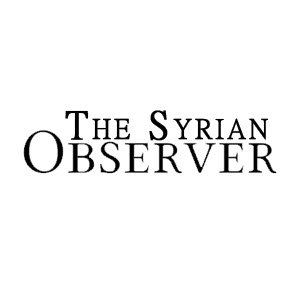As violence expands across Syria, fears over the future of the country are increasing. They range from the potential use of chemical weapons in the conflict to the unleashing of a full-fledged sectarian war and to the potential disintegration and partition of the country along sectarian and ethnic lines.
Regarding the latter risk, it is likely that economic factors will play an important role in terms of its impact on the centralization/decentralization debate and on how any future partition of the country could affect economic policies.
The issue that comes first to the mind is obviously the north-eastern part of Syria, inhabited to a large extent by a Kurdish population. While prior to the conflict the demands of the Kurds were mainly limited to linguistic and cultural rights, there are now increasing calls for the creation of an autonomous region. The issue is particularly sensitive because Syria’s northeastern region is home to the country’s largest reserves of crude oil.
Indeed, while fields located near Deir Ez Zor, where the population is overwhelmingly Arab, generated most of Syria’s crude output in the 1990s, their production has now fallen from more than 400,000 barrels per day (b/d) in 1996 to around 100,000 b/d in early 2011. The fields around Hassakeh, near the Kurdish region, now extract more than 250,000 b/d of crude and hold most of the country’s reserves; these fields are now to a large extent under the control of the Kurdish Democratic Union Party.
Besides oil, however, the northeast is also host to most of Syria’s wheat and cotton crops. Because bread is Syria’s main staple food and cotton is key to the development of the large textile industry, keeping control of the region will be of utmost importance for any future Syrian central government.
The fears over a Kurdish region with wide autonomous powers may be exaggerated in view of the relatively small size of the population, the lack of a major urban centre — Qamishli, the largest city in the Kurdish region, is home to only around 200,000 people — and the fact that Kurds are actually spread across the country; the largest concentration of Kurds is in Aleppo, which has a majority Arab population. Still, the debate on how to share the resources of the state between the central government and the various provinces making up the country will be of particular importance when it comes to the Kurdish-dominated parts of Syria.
Another region of Syria that matters in the debate over decentralization or partition is the coastal area, where a large portion of the population is Alawite. While the issue of a potential independent Alawite state was raised during the French mandate, it has largely died out since and was reignited only in the last few months with the growing sectarian tones of the conflict gripping the country. Besides the fact that Sunnis and Christians probably represent up to 50 percent of the population of that region, the economic challenges that such a region would face would be numerous.
Syria’s coastal region has very limited manufacturing and agricultural basis. Except for a refinery in Banias, a single power plant and an old cement plant, manufacturing is limited to light industries and agriculture to tobacco and citrus fruits.
Some argue that Lebanon has managed to remain independent with as little resources. However, Syria’s coastal region has none of Lebanon’s large expatriate community, significant human resource wealth and excellent know-how in the financial, touristic, education and health sectors.
The debate over the sharing of the resources of the central government goes, however, beyond the sectarian/ethnic issue. Syria’s small cities, spread across most of the country, such as Rastan, Talbisah and Tel Kalakh, have paid an extremely heavy price in the uprising and are likely to demand a much larger share of the government’s money and investment programs than other less affected regions — including parts of the country inhabited by minority groups, such as Suweida or the Christian city of Mhardeh.
What will the policy of any future government be on these issues and what impact will it have on issues such as development programs or political representation? With more time passing, the challenges for future Syrian governments are increasing. It is time the opposition starts thinking about them.
Jihad Yazigi
Note: This article appeared first in the April 2013 edition of Executive Magazine
......


